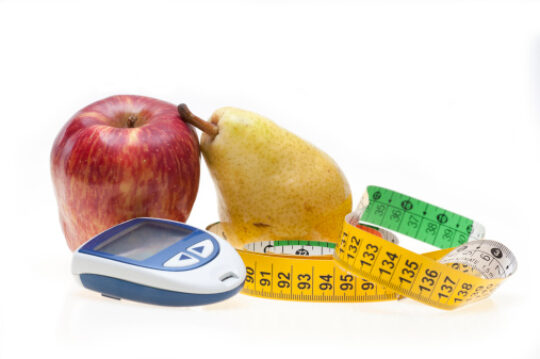Understanding Pre-Diabetes

People with blood sugar levels higher than normal but lower than values for diabetes are considered to have pre-diabetes. Research shows that most people with pre-diabetes will develop type 2 diabetes within 10 years.
It is recommended that you be tested for pre-diabetes if any of the following apply:
- You are overweight and older than 45 years of age.
- You are overweight and under the age of 45, but have a family history of diabetes, high blood pressure or high blood lipids (fat).
- You are African-American, Native American, Hispanic or Asian.
- You have a history of gestational diabetes; or have given birth to a baby weighing 9 pounds or more.
Making Healthy Changes
Making healthy changes in your diet and physical activity has been shown to delay or prevent diabetes and other health problems.
How Is Pre-Diabetes Diagnosed?
A fasting blood sugar test is performed after you have had nothing by mouth (eating or drinking) for eight hours. Normal fasting blood sugar is between 70 and 99 mg/dl for people who do not have diabetes. A normal random blood sugar result is between 70 and 140. The diagnosis of pre-diabetes is made when two blood tests show that your fasting blood sugar level is between 100 and 125 mg/dl, or if two random (anytime) blood sugar tests are greater than or equal to 140, but below 200.
Fasting Glucose Test
| Normal | Less than 100 |
|---|---|
| Pre-Diabetes | 100-125 |
| Diabetes | 126 or higher |
Random (Anytime)Glucose Test
| Normal | Less than 140 |
|---|---|
| Pre-Diabetes | 140-199 |
| Diabetes | Greater than 200 |
How Is Pre-Diabetes Treated?
The first step is to lose weight. You can achieve this through diet and increased physical activity. Also, talk with your doctor and other healthcare professionals about your treatment plan and goals.
How Can I Manage Pre-Diabetes?
You hold the key to managing your pre-diabetes by:
- Planning what you eat and following a balanced meal plan.
- Increasing physical activity.
- Taking your medicine, if prescribed, and closely following the guidelines on how and when to take it.
- Monitoring your blood sugar as prescribed by your doctor.
- Keeping your appointments with your healthcare provider.
- Monitoring your blood pressure (your target blood pressure is less than 130/80).
Cholesterol Guidelines
| Total cholesterol | Less than 200 mg/dl |
|---|---|
| LDL cholesterol | Less than 100 mg/dl |
| HDL cholesterol |
Greater than 45 mg/dl in males Greater than 55 mg/dl in females |
| Triglycerides | Less than 150 mg/dl |
